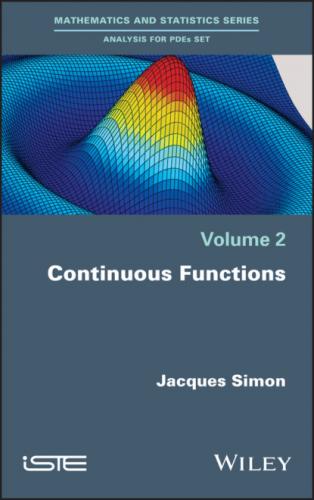Novelties. Many results are natural extensions of previous results, but the following seemed most noteworthy:
— The construction of the topology of the space
— The fact that if a function
— The concentration theorem for the integral and the construction of an incompressible tubular flow (Theorems 8.18 and 8.17), which are key steps in our construction of the primitives of a field taking values in a Neumann space, as it is explained in the comment Utility of the concentration theorem, p. 186.
Prerequisites. The proofs in the main body of the text only use definitions and results established in Volume 1, whose statements are recalled either in the text or in the Appendix. Detailed proofs are given, including arguments that may seem trivial to experienced readers, and the theorem numbers are systematically referenced.
Comments. Comments with a smaller font size than the main body of the text appeal to external results or results that have not yet been established. The Appendix on Reminders is also written with a smaller font size, since its contents are assumed to be familiar.
Historical notes. Wherever possible, the origin of the concepts and results is given as a footnote2.
Navigation through the book:
— The Table of Contents at the start of the book lists the topics discussed.
— The Table of Notations, p. xv, specifies the meaning of the notation in case there is any doubt.
— The Index, p. 243, provides an alternative access to specific topics.
— All hypotheses are stated directly within the theorems themselves.
— The numbering scheme is shared across every type of statement to make results easier to find by number (for instance, Theorem 2.9 is found between the statements 2.8 and 2.10, which are a definition and a theorem, respectively).
Acknowledgments. Enrique FERNÁNDEZ-CARA suggested to me a large number of improvements to various versions of this work. Jérôme LEMOINE was kind enough to proofread the countless versions of the book and correct just as many mistakes and oversights.
Olivier BESSON, Fulbert MIGNOT, Nicolas DEPAUW, and Didier BRESCH also provided many improvements, in form and in substance.
Pierre DREYFUSS gave me insight into the necessity of simply connected domains for the existence of primitives with Poincaré’s condition, as explained on p. 209 in the comment Is simple connectedness necessary for gluing together local primitives?
Joshua PEPPER spent much time discussing about the best way to adapt this work in English.
Thank you, my friends.
Jacques SIMON
Chapdes-Beaufort
April 2020
Notes
1 1 Students? What might I have answered if one of my MAS students in 1988 had asked for more details about the de Rham duality theorem that I used to obtain the pressure in the Navier-Stokes equations? Perhaps I could say that “Jacques-Louis LIONS, my supervisor, wrote that it follows from the de Rham cohomology theorem, of which I understand neither the statement, nor the proof, nor why it implies the result that we are using.” What a despicably unscientific appeal to authority!This question was the starting point of this work: writing proofs that I can explain to my students for every result that I use. It took me 5 years to find the “elementary” proof of the orthogonality theorem (Theorem 9.2, p. 194) on the existence of the primitives of a field q. I needed a way to obtain fr q • Ai = 0 for every closed path r from the condition fn q • y = 0 for every divergence-free y. It gave me the greatest mathematical satisfaction I have ever experienced to explicitly construct an incompressible tubular flow (see p. 184). Twenty-five years later, I am finally ready to answer any other questions from my (very persistent) students.
2 2 Appeal to the reader. Many important results lack historical notes because I am not familiar with their origins. I hope that my readers will forgive me for these omissions and any injustices they may discover. And I encourage the scholars among you to notify me of any improvements for future editions!
Familiarization with Semi-normed Spaces
A semi-normed space E is a vector space endowed with a family
— The set NE indexing the semi-norms is, a priori, arbitrary.
— A normed space is the special case where this family simply consists of a single norm.
— Every locally convex topological vector space can be endowed with a family of semi-norms that generates its topology (Neumann’s theorem).
— We only consider separated spaces, namely in which ||u||E;v = 0 for every v ∈ NE, then u = 0E.
Working with semi-normed spaces:
— un → u in E means that ||un − u||E;v → 0 for every v ∈ NE.
— U is bounded in E means that
— T is continuous from F into E at the point u means that, for every v ∈ NE and ϵ > 0, there exists a finite set M of NF and η > 0 such that
